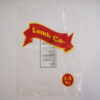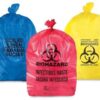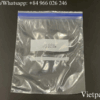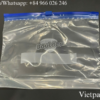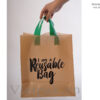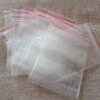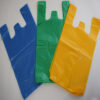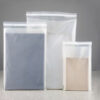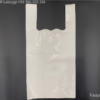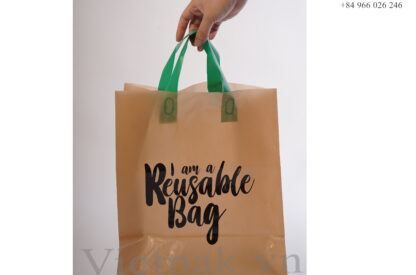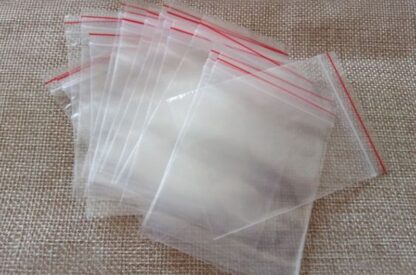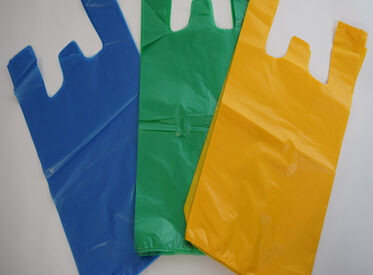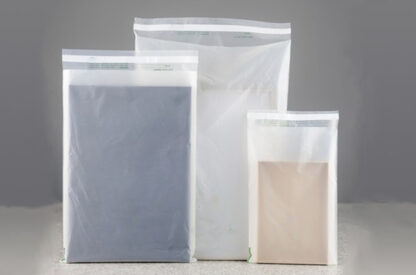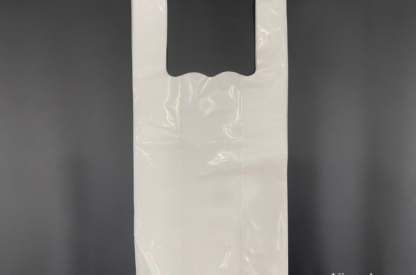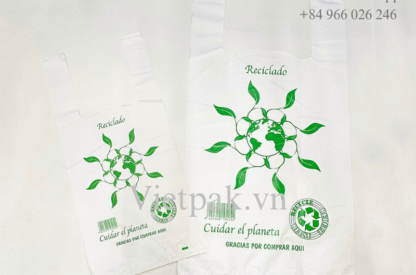What Are Plastic Vegetable Bags Made of?
Vegetable plastic bags on roll are a convenient and efficient packaging solution for storing and transporting fresh produce. These bags, commonly used in grocery stores, markets, and food service establishments, offer numerous advantages in terms of ease of use, preservation of freshness, and organizational benefits. To fully grasp their significance, it is essential to explore the composition of vegetable plastic bags on roll and the materials used in their manufacturing process.
Composition of Vegetable Plastic Bags
Contents
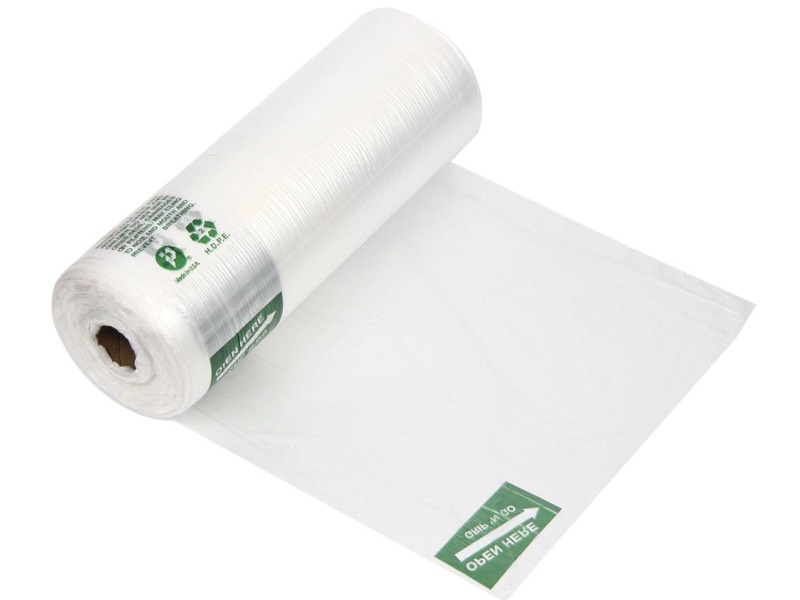
Vegetable plastic bags on a roll are a popular packaging option for storing and transporting fresh produce efficiently. Common materials that offer the necessary qualities for maintaining the quality and guaranteeing the performance of the packaged vegetables are typically used to make these bags. The secret to appreciating the functionality of these bags is to comprehend their construction and the function of the various materials.
Common Materials Used
Polyethylene (PE) and polypropylene (PP) are the two materials that are most frequently used to make vegetable plastic bags on a roll. These materials provide a variety of advantageous traits that enhance the bags’ performance and quality.
Polyethylene (PE) is a multipurpose plastic polymer valued for its adaptability, toughness, and moisture resistance. Low-density polyethylene (LDPE) and high-density polyethylene (HDPE) are just a couple of the forms it comes in. While HDPE offers greater strength and rigidity, LDPE is frequently used for its flexibility and usability.
Another material that is frequently used in vegetable plastic bags is polypropylene (PP). It is renowned for its transparency, high melting point, and immunity to chemicals and moisture. Vegetables are well-protected during storage and transport thanks to the excellent durability of PP bags.
Role of Materials in Quality and Performance
Vegetable plastic bags’ performance and quality are greatly influenced by the material selection. Here are some important things to think about:
- Strength and Durability: Both PE and PP offer excellent strength and durability, ensuring that the bags can withstand the weight and pressure of vegetables without tearing or breaking. This allows for safe transportation and storage of produce.
- Moisture Resistance: Vegetables contain high levels of moisture, and the materials used in plastic bags must provide an effective barrier against moisture. PE and PP have inherent moisture resistance properties, preventing excess moisture from seeping into the bags and compromising the quality of the vegetables.
- Flexibility and practicality: LDPE bags, in particular, are renowned for their versatility and usability. They are simple to stretch and reshape to fit a variety of vegetable sizes and shapes, which makes packing and organizing easier.
- Clarity and Visibility: PP bags have excellent clarity, making the contents clearly visible. This is especially useful for quickly identifying particular vegetables or for presenting products in an appealing way.
Polyethylene (PE): The Primary Material for Vegetable Plastic Bags
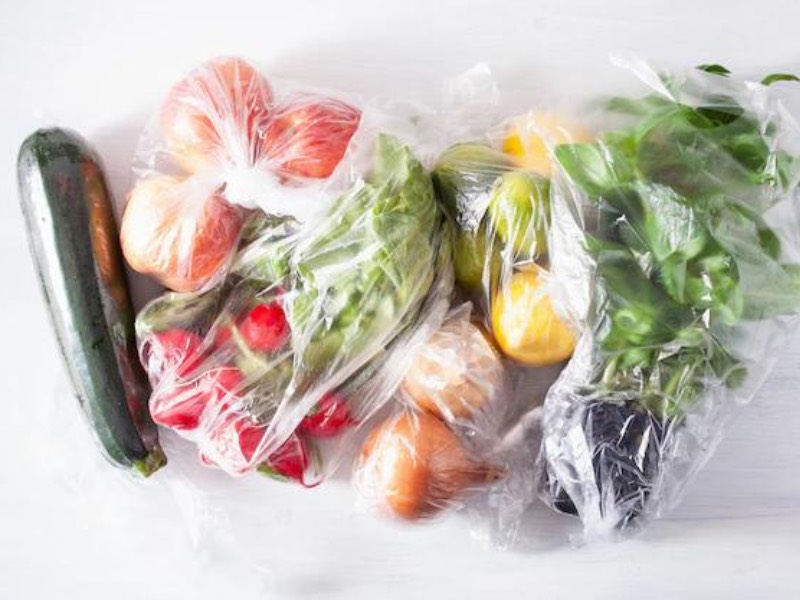
Polyethylene (PE) is the primary material used in the production of vegetable plastic bags on a roll. It is chosen for its excellent properties and characteristics that make it well-suited for packaging fresh produce. Let’s explore the properties of PE and the benefits it offers in vegetable plastic bags.
Properties and Characteristics of PE
PE is a thermoplastic polymer that exhibits several desirable properties for vegetable packaging. These properties include:
- Flexibility: PE is known for its flexibility which allows the bags to easily conform to the shape and size of the vegetables. This flexibility makes it convenient for packing different types of produce.
- Strength and Durability: PE bags have good tensile strength, ensuring they can withstand the weight and pressure of the vegetables without tearing or breaking. This durability helps protect the product during transportation and storage.
- Moisture Resistance: PE is inherently resistant to moisture, creating a protective barrier that prevents water from seeping into the bags and causing spoilage. This property helps maintain the freshness and quality of the vegetables for longer periods.
- Transparency: PE bags have excellent clarity, allowing for clear visibility of the contents. This transparency makes it easy to identify the vegetables and assess their condition without having to open the bags.
Benefits and Applications of PE in Vegetable Plastic Bags
When used in vegetable plastic bags on a roll, PE has several advantages. These advantages consist of:
- Preservation of Freshness: The moisture resistance property of PE helps retain the natural moisture of the vegetables, keeping them fresh and crisp. This prolongs the shelf life of the product and ensures they remain in optimal condition.
- Protection against Contamination: PE bags act as a protective barrier, preventing external contaminants such as dirt, dust, and pests from coming into contact with the vegetables. This helps maintain their cleanliness and hygiene.
- Versatility: PE is a versatile material that can be easily customized into various bag sizes and shapes to accommodate different types of vegetables. Therefore, it offers flexibility in packaging options, making it suitable for a wide range of produce.
- Cost-Effectiveness: PE bags are generally cost-effective compared to other packaging materials. They provide a reliable and affordable solution for storing and transporting vegetables, making them accessible to a broader range of users.
In summary, polyethylene (PE) is the primary material of choice for vegetable plastic bags on a roll due to its favorable properties and benefits. It ensures the preservation and protection of the packaged vegetables by providing flexibility, strength, moisture resistance, and transparency. It is an excellent option for a variety of vegetable packaging applications due to its adaptability and affordability.
Reference: Understanding Plastic Types: Polyethylene (PE)
Polypropylene (PP): A Versatile Material for Vegetable Plastic Bags
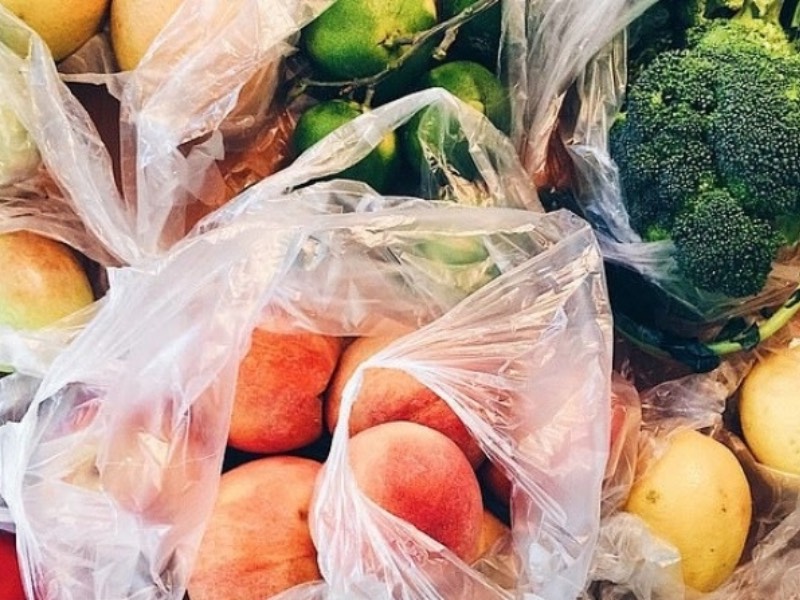
Polypropylene (PP) is another versatile material commonly used in the production of vegetable plastic bags on a roll. Let’s explore the features and advantages of PP and its suitability for vegetable packaging.
Features and Advantages of PP
PP is a thermoplastic polymer known for its unique characteristics that make it suitable for packaging applications. Some of the features and advantages of PP in vegetable plastic bags include:
- Clarity and Gloss: PP bags have excellent clarity and a glossy finish, providing an attractive presentation for the packaged vegetables. This enhances their visual appeal and can be beneficial for display purposes.
- Strength and Durability: PP bags offer good strength and durability, ensuring the vegetables are well-protected during transportation and storage. They can withstand rough handling and resist tearing or puncturing.
- Moisture Resistance: PP exhibits inherent moisture resistance, preventing water or moisture from permeating the bags and compromising the quality of the vegetables. Therefore, this helps maintain their freshness and extends their shelf life.
Suitability for Vegetable Packaging
PP is particularly suitable for vegetable packaging due to its unique properties. Here are some reasons why PP is a preferred choice:
- Heat Resistance: PP has a high melting point, making it suitable for packaging vegetables that require higher temperature resistance during transportation or cooking.
- Chemical Resistance: PP is resistant to various chemicals, ensuring the packaged vegetables are protected from potential interactions with external substances that may affect their quality.
- Versatility: PP can be easily formed into different shapes and sizes, allowing for customization and flexibility in packaging various types of vegetables. It offers versatility in meeting specific packaging requirements.
- Recyclability: PP is recyclable, making it an environmentally friendly choice. It can be reprocessed into new products, contributing to sustainable practices in the packaging industry.
In conclusion, vegetable plastic bags on a roll commonly use the materials polyethylene (PE) and polypropylene (PP). PE has qualities like flexibility, strength, and moisture resistance that help keep produce fresh and safe. Therefore, PP is ideal for attractive presentation and specialized packaging needs thanks to features like clarity, strength, and heat resistance. Understanding the advantages and suitability of these materials makes it possible to package vegetables effectively and efficiently for long shelf life and top quality.
Other Additives and Enhancements in Vegetable Plastic Bags
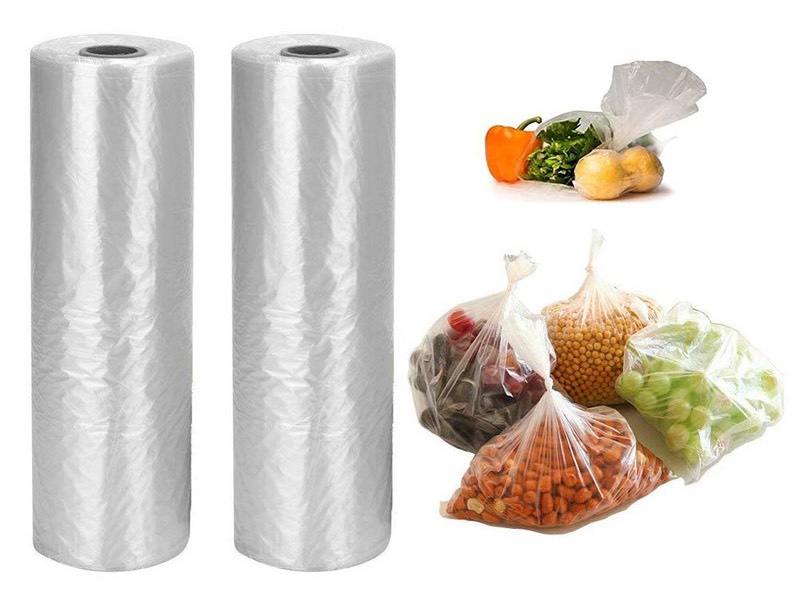
In addition to the primary materials like polyethylene (PE) and polypropylene (PP), vegetable plastic bags on a roll may incorporate various additives and enhancements to further enhance their performance and functionality. Let’s explore some of these additives and their roles in vegetable plastic bags.
Reinforcements for Strength and Durability
To enhance the strength and durability of vegetable plastic bags, manufacturers may incorporate reinforcements such as:
- Lamination: Lamination involves bonding multiple layers of plastic together, increasing the bag’s resistance to tearing or puncturing. Laminated vegetable bags offer enhanced durability, making them suitable for packaging heavier or bulkier produce.
- Mesh or Netting: Some vegetable bags feature a mesh or netting structure, providing additional strength while allowing for air circulation. Therefore, these bags are commonly used for storing produce like onions, potatoes, or citrus fruits.
- Bottom Sealing: Bags with reinforced bottom seals offer extra support and stability, preventing them from breaking or tearing when carrying heavier vegetables.
Additives for UV Resistance and Moisture Control
To protect the packaged vegetables from external factors like sunlight and moisture, vegetable plastic bags may include specific additives:
- UV Stabilizers: UV stabilizers are added to the plastic material to increase its resistance to ultraviolet (UV) rays. This helps prevent the degradation and discoloration of the bags when exposed to sunlight, ensuring the vegetables remain protected.
- Moisture Control Additives: Moisture control additives help regulate the moisture levels within the bags. Therefore, they reduce condensation and preventing the build-up of excess moisture. This feature is particularly useful for certain types of vegetables that require specific moisture conditions for optimal storage.
In conclusion, the performance and general quality of the vegetable plastic bags on a roll are improved by these additions and improvements. The vegetables are well-preserved and maintained during storage and transportation thanks to their added strength, durability, and defense against the elements.
Read also: What are Vegetable Bags Used for?
Conclusion
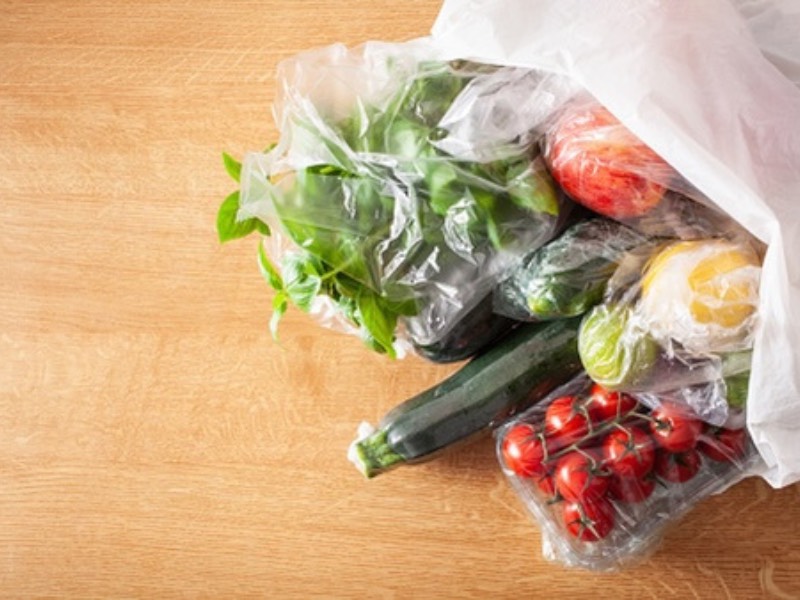
In summary, vegetable plastic bags on a roll are primarily made of materials like polyethylene (PE) and polypropylene (PP). Therefore, they provide a convenient and effective solution for packaging and preserving vegetables. These bags ensure the product’s quality and freshness by providing durability, resistance to moisture, and protection from contaminants. In order to reduce the negative effects of plastic bags on the environment, it is essential to think about sustainable practices and investigate eco-friendly alternatives.
LEADING MANUFACTURER
We are a premier plastic bag manufacturer based in Vietnam. Our dedicated team excels in crafting customized packaging solutions to precisely meet the needs of all customers
QUALITY CONTROL
We have a strict quality control system. Our bags are inspected before production, during production, and prior to loading into containers. Our priority is to minimize every defective goods before shipping to our customers
AMAZING SERVICE
Our enthusiastic customer service team always strives to respond to your emails as promptly as possible. We take pride in our ability to consistently deliver high-quality products on time, every time.


